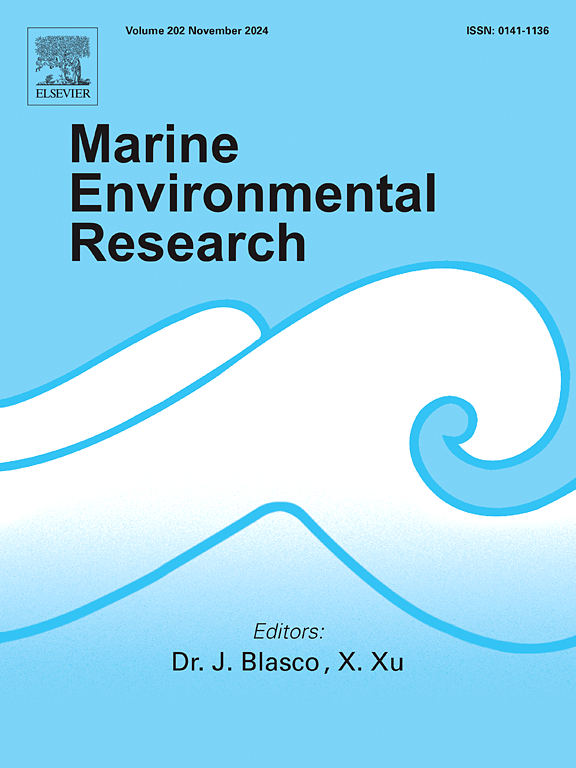21世纪海草研究的趋势——我们到了吗?
IF 3
3区 环境科学与生态学
Q2 ENVIRONMENTAL SCIENCES
引用次数: 0
摘要
Duarte在1999年发表的评论“世纪之交的海草生态”为海草研究建立了一个基准。25年后,一项对11245份出版物(2000年至2023年之间发表的出版物)的分析显示,增长显著,但偏见持续存在。虽然在此期间,关于海草的年度出版物数量增加了近4倍,但对海草的研究仍然远不如对红树林和珊瑚礁的研究广泛。仅来自两个国家(澳大利亚和美国)的作者仍然占世界海草出版物的很大比例(35%)。海草群落仍然不成比例地集中在4个关键物种上,这些物种加起来占所有海草出版物的59%。虽然在过去的12年里,科学对Zostera marina和Cymadocoae nodosa的关注持续甚至变得更加强烈,但最近对热带物种Thalassia hemprichii和Halophila tolacea的关注有所增加,有一些变化的迹象。在过去以基本的描述生态学为主的基础上,海草研究的主题已经变得更加定量,并集中在对压力源的反应、遗传学和基因组学、生态系统服务、恢复和恢复力建设等方面。这些发现表明,海草研究界需要转向一种更全面、更包容的方法。我们必须优先考虑代表性不足的物种和地理区域,采用综合方法并促进强有力的跨学科合作,以确保这些重要的沿海生态系统的长期健康和可持续性。只有共同努力,才能有效应对全球海草面临的多方面挑战。本文章由计算机程序翻译,如有差异,请以英文原文为准。
Trends in seagrass research in the 21st century – are we there yet?
Duarte's 1999 review, “Seagrass ecology at the turn of the millennium” established a benchmark for seagrass research. Twenty-five years later, an analysis of 11,245 publications (published between 2000–2023) reveals substantial growth but persistent biases. While the volume of annual publications on seagrasses has increased over this period almost 4 folds, seagrass research remains significantly less extensive than studies on mangroves and coral reefs. Authors from only two countries (Australia and the USA) were still responsible for a huge proportion (35 %) of the world's seagrass publications. The seagrass community has remained disproportionately focused on only 4 key species which together account for 59 % of all seagrass publications. While scientific attention continues and even becomes stronger in the last 12 years for Zostera marina and Cymadocoae nodosa, there are some signs of change with recent growing attention to the tropical species Thalassia hemprichii and Halophila stipulacea. While previously dominated by basic descriptive ecology, seagrass research topics have become more quantitative and focused on responses to stressors, genetics and genomics, ecosystem services, and restoration and resilience building.
These findings demonstrate that the seagrass research community needs to shift towards a more holistic and inclusive approach. We must prioritize under-represented species and geographical regions, adopt integrated methodologies and foster strong interdisciplinary collaborations to secure the long-term health and sustainability of these vital coastal ecosystems. Only through such concerted efforts can we effectively address the multifaceted challenges facing seagrasses globally.
求助全文
通过发布文献求助,成功后即可免费获取论文全文。
去求助
来源期刊

Marine environmental research
环境科学-毒理学
CiteScore
5.90
自引率
3.00%
发文量
217
审稿时长
46 days
期刊介绍:
Marine Environmental Research publishes original research papers on chemical, physical, and biological interactions in the oceans and coastal waters. The journal serves as a forum for new information on biology, chemistry, and toxicology and syntheses that advance understanding of marine environmental processes.
Submission of multidisciplinary studies is encouraged. Studies that utilize experimental approaches to clarify the roles of anthropogenic and natural causes of changes in marine ecosystems are especially welcome, as are those studies that represent new developments of a theoretical or conceptual aspect of marine science. All papers published in this journal are reviewed by qualified peers prior to acceptance and publication. Examples of topics considered to be appropriate for the journal include, but are not limited to, the following:
– The extent, persistence, and consequences of change and the recovery from such change in natural marine systems
– The biochemical, physiological, and ecological consequences of contaminants to marine organisms and ecosystems
– The biogeochemistry of naturally occurring and anthropogenic substances
– Models that describe and predict the above processes
– Monitoring studies, to the extent that their results provide new information on functional processes
– Methodological papers describing improved quantitative techniques for the marine sciences.
 求助内容:
求助内容: 应助结果提醒方式:
应助结果提醒方式:


